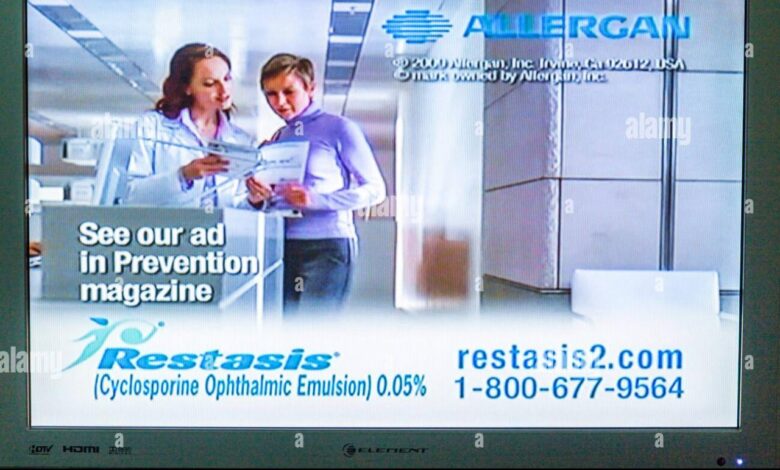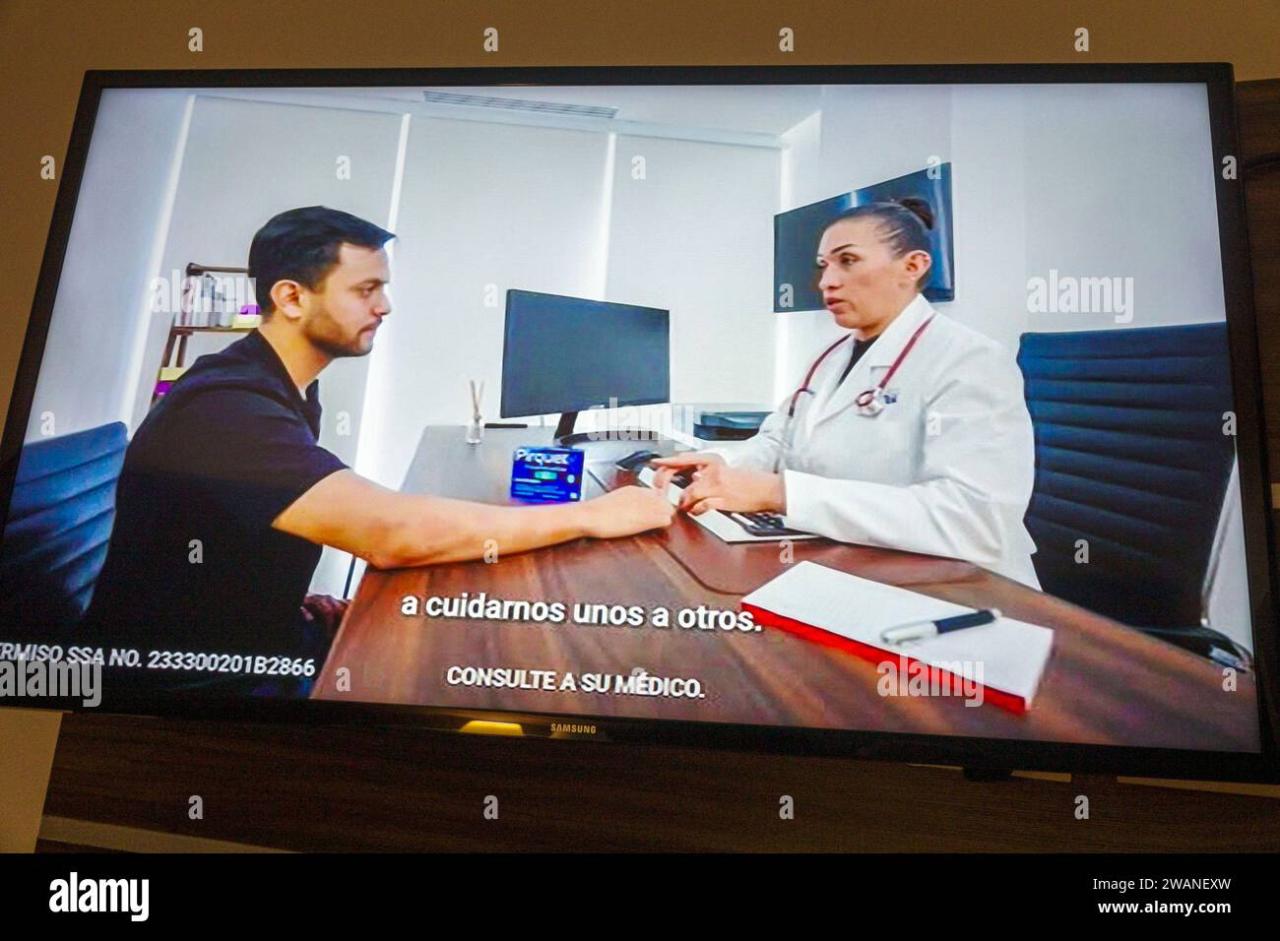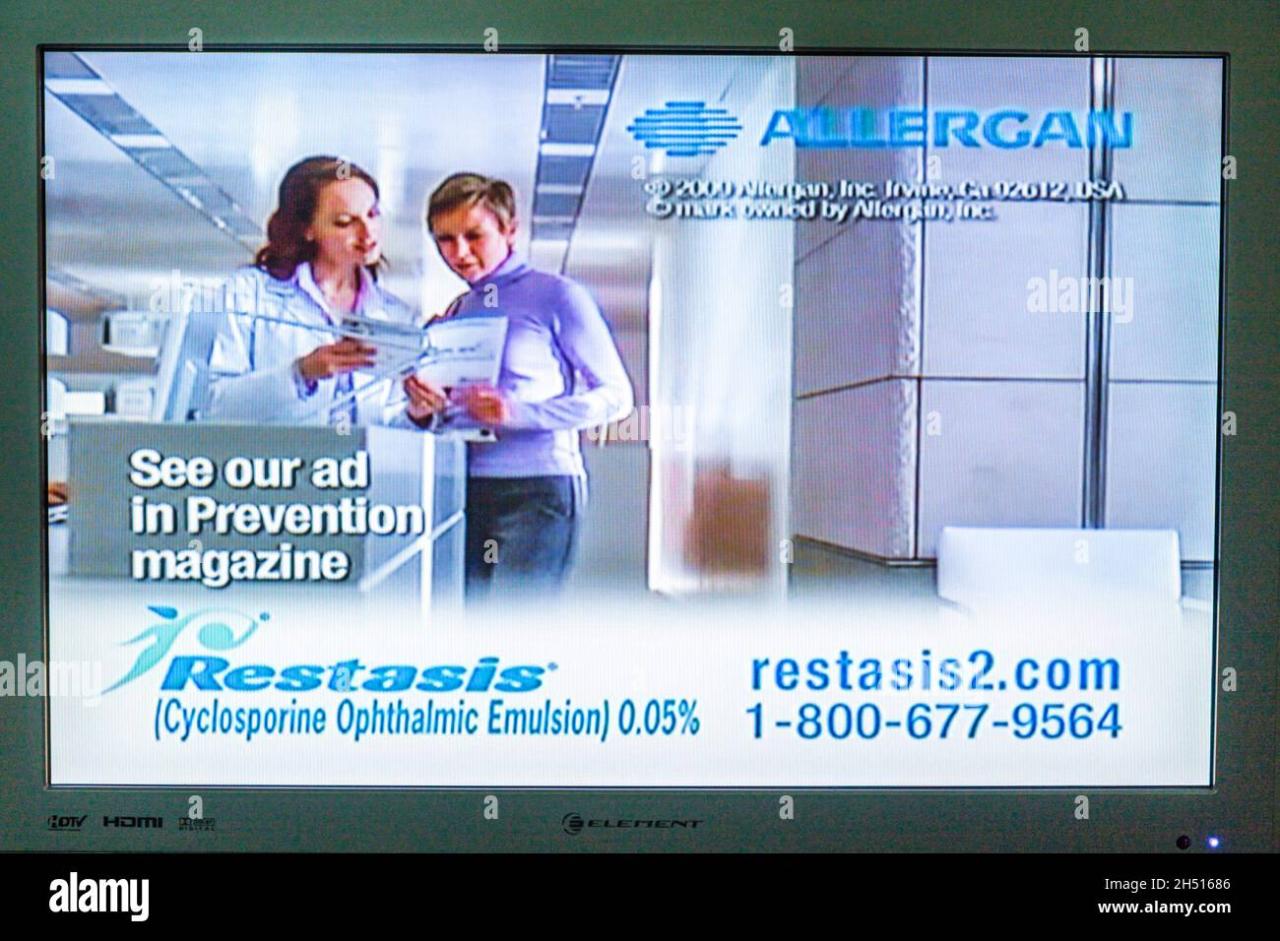
TV Screens Branded Messaging Enhances Patient Experience
TV screens broadcasting branded messaging enhance the patient experience in unexpected ways. Think beyond sterile hospital walls – imagine calming nature scenes, inspiring patient stories, and subtle brand reminders creating a more positive and comfortable atmosphere. This isn’t just about advertising; it’s about leveraging the power of visual communication to improve the overall patient journey, reducing anxiety and fostering a sense of trust.
We’ll explore how strategic content, thoughtful design, and ethical considerations all contribute to a better experience for those receiving care.
From the type of messaging used – calming nature scenes versus upbeat testimonials – to the technical aspects of implementing these systems, we’ll dive into every detail. We’ll examine how to create a content calendar that keeps patients engaged without being overwhelming, and how to measure the effectiveness of your efforts. We’ll even touch on the ethical and legal considerations to ensure a responsible and impactful approach.
Impact of Branded Messaging on Patient Perception

Source: alamy.com
The design and implementation of branded messaging within healthcare settings significantly influence patient perception and experience. Strategic use of visuals and messaging can foster a sense of calm, trust, and overall well-being, while poorly executed branding can have the opposite effect, increasing anxiety and dissatisfaction. Understanding this impact is crucial for creating a positive and supportive environment for patients.
Calming Visuals and Positive Testimonials Reduce Anxiety
Calming visuals, such as nature scenes or abstract art featuring soothing colors, have been shown to reduce patient anxiety and improve mood. Studies have demonstrated that exposure to natural imagery can lower blood pressure and heart rate, creating a more relaxed atmosphere. Similarly, incorporating positive patient testimonials, showcasing successful treatments and positive experiences, can build trust and alleviate apprehension about procedures or treatments.
These testimonials offer a human element, allowing potential patients to connect with real experiences and reducing feelings of isolation or fear. For example, a hospital showing a video montage of patients recovering and expressing gratitude can have a profoundly positive effect on those awaiting treatment.
Subtle Branding vs. Overt Advertising: A Comparison of Effectiveness
The approach to branding significantly impacts patient comfort. Subtle branding, integrated seamlessly into the environment through color palettes, fonts, and logo placement, tends to be more effective in fostering a positive atmosphere without feeling intrusive or overwhelming. Overt advertising, on the other hand, with large, bold logos and frequent promotional messages, can be perceived as disruptive and potentially insensitive, detracting from the focus on patient care.
A subtle, calming color scheme with a small, unobtrusive logo is far more likely to create a sense of calm than large, brightly colored advertisements plastered throughout the waiting area.
Branded Messaging and the Fostering of Trust and Confidence
Consistent and well-designed branded messaging contributes significantly to building trust and confidence in the healthcare provider. A clear and consistent brand identity across all communication channels—from website to in-person signage—reinforces professionalism and competence. This consistency creates a sense of reliability and assures patients that they are receiving care from a reputable and trustworthy source. For example, a hospital consistently using calming blues and greens in its branding, combined with clear and concise information, projects an image of serenity and expertise.
Negative Impacts of Poorly Designed Branded Messaging
Conversely, poorly designed or inappropriate branded messaging can have detrimental effects. Using jarring colors, cluttered designs, or insensitive imagery can increase patient anxiety and dissatisfaction. Inconsistent branding across different departments or platforms can create confusion and undermine trust. For instance, a children’s hospital using dark and somber colors would be highly inappropriate and counterproductive, potentially increasing a child’s anxiety.
Similarly, using overly commercialized messaging can feel insensitive and prioritize profit over patient well-being, damaging the hospital’s reputation.
Technical Aspects of Implementing Branded Messaging: Tv Screens Broadcasting Branded Messaging Enhance The Patient Experience In

Source: alamy.com
Successfully integrating branded messaging into a healthcare environment requires careful consideration of technical specifications and potential challenges. This ensures optimal viewing for patients and efficient management of the system. The following sections detail key technical aspects for a smooth implementation.
Screen Resolution, Brightness, and Placement
Optimal screen resolution, brightness, and placement are crucial for effective communication. Waiting room screens, for example, benefit from higher resolutions (at least 1920×1080 pixels) and higher brightness (at least 500 nits) to combat ambient light. Placement should be strategically chosen to maximize visibility without obstructing pathways or creating distractions. Patient rooms, on the other hand, may require lower brightness levels to avoid discomfort and can utilize smaller screens with lower resolution, prioritizing clear readability over high visual fidelity.
The type of content displayed also plays a role. Static images may require less brightness than video content.
Content Updates and Maintenance
A robust content management system (CMS) is essential for efficient updates and maintenance. A cloud-based CMS allows for remote content updates, minimizing downtime and streamlining the process. Scheduling features within the CMS enable automated content rotation, ensuring fresh and engaging material. Regular maintenance should include screen cleaning, software updates, and hardware checks to prevent malfunctions and ensure optimal performance.
A proactive approach to maintenance, including scheduled inspections and preventative measures, can significantly reduce the risk of costly repairs and system downtime. For instance, regular cleaning of screens prevents dust buildup which can impact image quality and even lead to hardware damage.
Thinking about how to improve patient comfort in waiting rooms? TV screens broadcasting branded messaging can definitely enhance the experience, offering a distraction and even providing useful information. However, it’s crucial to remember that many patients might be at risk for serious conditions, like stroke; understanding the risk factors that make stroke more dangerous is vital for healthcare providers.
Therefore, alongside the entertainment, perhaps incorporating health-related PSAs on those same screens would be a beneficial addition to enhancing the patient experience.
Integration with Other Patient Engagement Technologies
Seamless integration with other patient engagement technologies enhances the overall patient experience. Branded messaging displayed on TVs can be synchronized with digital signage in hallways or waiting areas, providing a cohesive brand experience. Integration with patient portals allows for personalized messaging based on individual patient data (with appropriate privacy considerations, of course). For example, a patient’s appointment time could be displayed on their room’s TV screen alongside branded health tips.
This integration requires careful planning and coordination to ensure data security and prevent conflicts between systems.
Potential Technical Challenges and Solutions, Tv screens broadcasting branded messaging enhance the patient experience in
Deploying and managing a network of TV screens presents several potential challenges. The following table Artikels some common challenges, their solutions, and associated costs.
| Challenge | Solution | Cost Implications | Mitigation Strategy |
|---|---|---|---|
| Network Connectivity Issues | Robust network infrastructure with redundant connections and high bandwidth capacity. | High initial investment in network equipment; ongoing costs for maintenance and support. Estimated cost: $5,000 – $20,000 depending on the size of the network. | Thorough network planning and testing prior to deployment. Regular network monitoring and maintenance. |
| Content Delivery Delays | Utilize a Content Delivery Network (CDN) for faster content distribution. | Ongoing subscription fees for CDN services. Estimated cost: $500 – $2,000 per year. | Optimize content for faster loading times. Regularly monitor content delivery performance. |
| Hardware Malfunctions | Implement a remote monitoring system for proactive identification and resolution of hardware issues. Use durable and reliable hardware. | Initial investment in hardware with longer lifespan and remote monitoring software; ongoing maintenance costs. Estimated cost: $1,000 – $5,000 per screen for high-quality equipment. | Regular hardware maintenance and preventative measures. Implement a robust warranty and service contract. |
| Software Updates and Compatibility Issues | Regular software updates and compatibility testing. Use standardized hardware and software. | Ongoing costs for software updates and maintenance. Potential costs for resolving compatibility issues. Estimated cost: $100 – $500 per year per screen. | Establish a clear software update schedule. Thorough testing of software updates before deployment. |
Measuring the Effectiveness of Branded Messaging

Source: alamy.com
Successfully implementing branded messaging in healthcare settings requires a robust system for evaluating its impact. Understanding patient response and engagement is crucial for optimizing the messaging and maximizing its positive influence on the overall patient experience. This involves a multi-faceted approach encompassing data collection, analysis, and correlation with key performance indicators.
A comprehensive methodology for assessing the effectiveness of branded messaging should incorporate both quantitative and qualitative data. Quantitative data provides measurable insights into patient engagement, while qualitative data offers richer context and understanding of patient perceptions.
Patient Satisfaction and Engagement Measurement
This section details a structured approach to collecting and analyzing data on patient satisfaction and engagement with branded messaging displayed on TV screens. The methodology combines various techniques to gain a holistic view of patient response. A mixed-methods approach is recommended, using both surveys and observational data.
Surveys can be administered through various channels, including QR codes displayed on the screens, physical questionnaires in waiting areas, and online surveys sent via email or text message post-visit. Questions should focus on aspects such as message clarity, relevance, perceived value, and overall satisfaction. The use of a Likert scale (e.g., strongly agree to strongly disagree) is effective for quantifying responses.
Observational data, collected by trained personnel, can supplement survey data by noting patient reactions (e.g., time spent viewing the screen, visible engagement with the content) to gain a richer understanding of passive engagement.
Data Collection and Analysis
Data analysis involves a two-pronged approach. First, descriptive statistics (means, standard deviations, frequencies) will be calculated to summarize the survey responses. This provides an overview of patient satisfaction levels and identifies areas where messaging may be improved. Second, more advanced statistical techniques, such as correlation analysis, will be employed to explore relationships between specific aspects of the messaging and patient satisfaction scores.
For instance, we can examine whether specific message themes or visual styles correlate with higher satisfaction ratings.
Qualitative data analysis involves a thematic analysis of open-ended survey responses and observational notes. This will help to identify recurring themes and patterns in patient feedback, providing insights into their experiences and perceptions. Combining quantitative and qualitative data allows for a more nuanced and comprehensive understanding of the impact of the branded messaging.
Correlating Patient Experience Metrics with Specific Content
To effectively correlate patient experience metrics with specific content, each message displayed on the screens should be uniquely identified and tracked. This can be achieved through a content management system that logs the displayed message and the duration of its display. This allows for linking specific message attributes (e.g., topic, visual style, length) with corresponding patient satisfaction scores from the surveys and observational data.
This will help identify which messaging strategies are most effective in improving patient satisfaction and engagement. For example, a correlation analysis might reveal that messages focusing on patient testimonials lead to higher satisfaction scores compared to messages solely focusing on facility information.
Visual Representation of Key Performance Indicators (KPIs)
A bar chart can effectively visualize key performance indicators related to patient experience enhancement. The chart would display average patient satisfaction scores (measured on a 1-5 Likert scale, for instance) on the y-axis, and different message categories (e.g., “Patient Testimonials,” “Facility Information,” “Community Events”) on the x-axis. Each bar represents the average satisfaction score for a specific message category.
Data sources would include survey responses and observational notes.
For example, a bar for “Patient Testimonials” might show an average satisfaction score of 4.2, while “Facility Information” might show 3.5, indicating that patient testimonials are more effective at improving satisfaction. The chart clearly demonstrates the relative effectiveness of different message categories in enhancing patient experience. This visual representation allows for easy identification of high-performing and low-performing message types, guiding future messaging strategies and resource allocation.
Ethical Considerations and Legal Compliance
Implementing branded messaging in healthcare requires careful consideration of ethical implications and legal compliance. Balancing the benefits of enhanced patient experience with the potential risks to patient privacy and the need for transparent communication is crucial for maintaining trust and avoiding legal repercussions. A robust ethical framework and adherence to relevant regulations are paramount.Patient privacy and informed consent are central to ethical considerations.
Thinking about ways to improve patient comfort? TV screens broadcasting branded messaging can definitely enhance the patient experience in waiting rooms, subtly diverting attention and creating a more pleasant atmosphere. It’s a far cry from the financial struggles faced by some healthcare providers, like Steward Health Care, who recently secured financing to emerge from bankruptcy, as reported here: steward health care secures financing bankruptcy.
Ultimately, though, focusing on positive patient experiences through thoughtful amenities like these screens remains crucial for building trust and loyalty.
The use of patient data, even anonymized, for marketing purposes raises concerns about potential breaches of confidentiality. Furthermore, patients must be fully informed about the use of their data and have the opportunity to opt out. Transparency in data collection and usage practices is key to building and maintaining trust.
Patient Privacy and Informed Consent
Protecting patient privacy is paramount. Any collection or use of patient data for branded messaging must strictly adhere to HIPAA (Health Insurance Portability and Accountability Act) regulations in the United States, or equivalent regulations in other jurisdictions. This includes obtaining explicit informed consent from patients before collecting or using their data for marketing purposes. Consent forms should be clear, concise, and easily understandable, explaining how the data will be used and the patient’s rights regarding their data.
Patients should be given the option to withdraw their consent at any time. Data security measures must also be robust to prevent unauthorized access or disclosure of patient information. For example, a hospital system might use de-identified data for general marketing campaigns focusing on service improvements, ensuring individual patient data is not linked to the messaging.
Legal Issues Related to Advertising and Marketing in Healthcare
Healthcare advertising and marketing are subject to strict regulations designed to prevent misleading or deceptive practices. False or unsubstantiated claims about treatments or products can lead to significant legal penalties. Regulations vary by jurisdiction, but common requirements include accurate representation of services, avoiding testimonials that could be interpreted as endorsements without proper disclosure, and ensuring that advertising does not exploit patients’ vulnerabilities.
Compliance requires careful review of all messaging by legal counsel experienced in healthcare advertising. For example, an advertisement for a new surgical procedure must accurately reflect the success rates, potential risks, and recovery times, and must avoid overly optimistic or misleading claims.
Best Practices for Ensuring Compliance
Establishing clear internal policies and procedures for branded messaging is essential. This includes designating a responsible individual or team to oversee compliance, conducting regular audits to ensure adherence to regulations, and providing training to staff involved in the creation and dissemination of branded messaging. Maintaining detailed records of all consent forms, data collection practices, and advertising materials is crucial for demonstrating compliance in the event of an audit or legal challenge.
External legal counsel specializing in healthcare advertising should be consulted to ensure that all materials meet regulatory requirements. Regular review of advertising and marketing materials by an independent compliance officer can also help to identify potential issues before they become problematic.
Thinking about how to improve patient comfort, I was considering the impact of TV screens broadcasting branded messaging in hospital waiting areas – a subtle way to enhance the experience. However, news about Steward Health Care, like this article on Steward Ohio hospitals closures Pennsylvania facility at risk , makes you wonder about the resources available for such amenities.
Ultimately, positive patient experiences depend on so much more than just screens, but they certainly play a part in the overall atmosphere.
Transparency and Honesty in Branded Messaging
Transparency and honesty are crucial for building and maintaining patient trust. Branded messaging should clearly identify the source of the message and avoid any attempt to mislead or deceive patients. Any partnerships or affiliations with other organizations should be disclosed. If sponsored content is being used, it should be clearly labeled as such. For instance, a screen displaying information about a new diabetes management program should clearly state that it’s sponsored by a pharmaceutical company, along with a disclaimer about potential side effects of the medication.
This transparency fosters trust and helps patients make informed decisions about their healthcare.
Concluding Remarks
Ultimately, using TV screens to broadcast branded messaging in healthcare settings isn’t just about marketing; it’s about enhancing the human experience. By carefully considering the content, design, and ethical implications, healthcare providers can create a more welcoming and supportive environment. The key is a thoughtful strategy that prioritizes patient well-being while subtly integrating brand messaging. The result?
Happier patients, improved outcomes, and a stronger brand connection. It’s a win-win for everyone involved.
FAQ
What if patients find the branded messaging intrusive or annoying?
This is a valid concern. Careful consideration of content style and frequency is crucial. Subtle branding and a variety of content types help avoid this. Gathering patient feedback is essential to adjust the strategy.
How do I ensure compliance with HIPAA regulations?
Patient privacy is paramount. Avoid displaying any Protected Health Information (PHI) on screens. Consult with legal counsel to ensure compliance with all relevant regulations.
What’s the return on investment (ROI) for this type of initiative?
ROI can be measured through improved patient satisfaction scores, increased positive online reviews, and potentially even better clinical outcomes linked to reduced stress and anxiety. Tracking key performance indicators (KPIs) is key to demonstrating value.

